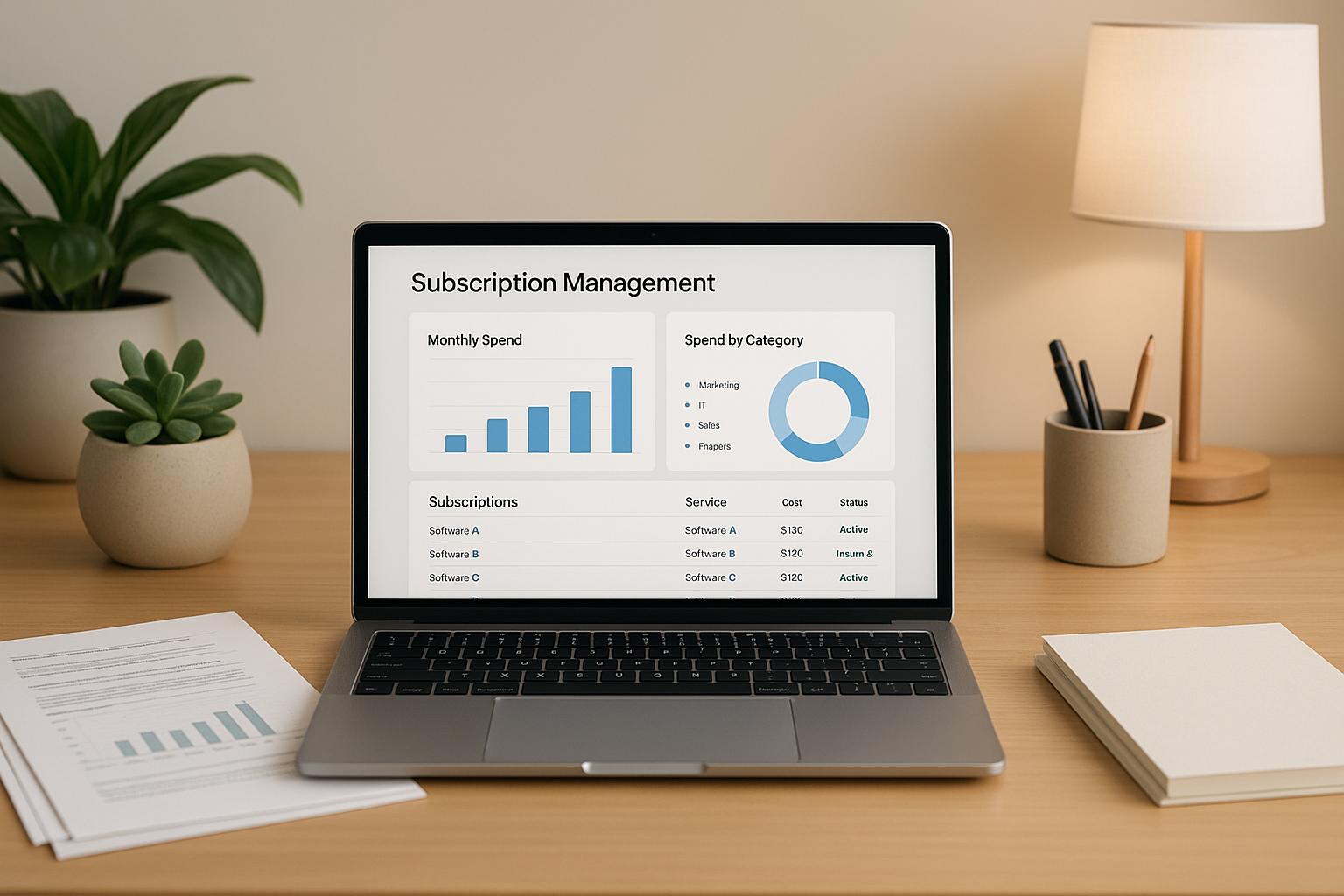Contingency Planning for M&A Success

Mergers and acquisitions (M&A) are high-stakes ventures with a failure rate of 70%-90%. Why? Poor planning for risks like regulatory delays, leadership turnover, and cybersecurity issues. Contingency planning is the solution. It helps businesses prepare for financial, operational, legal, and human challenges during M&A.
Key Takeaways:
- Risks to Address: Overestimated synergies, cybersecurity threats (53% of deals face issues), and leader retention (32% less turnover with retention plans).
- Steps to Build a Plan: Identify risks, allocate resources, and test scenarios for "what if" situations.
- Tools to Use: Risk matrices, financial models, and stress testing for realistic outcomes.
Without preparation, deals can lose value or fail entirely. With the right plan, businesses can manage risks, protect deal value, and ensure smoother transitions.
How to Build an M&A Contingency Plan
Turning insights about M&A risks into a practical contingency plan is a critical step for mid-market companies in the U.S. This process involves three key steps: identifying and prioritizing risks, allocating resources effectively, and using scenario planning to prepare for potential challenges.
Finding and Ranking Risks
A strong contingency plan begins with identifying risks. Companies need to look at five main areas: financial, operational, strategic, legal, and human resources. This ensures that no major vulnerabilities are missed during the transaction.
Tools like SWOT and PEST analyses are invaluable here. They help companies go beyond financial concerns to consider market trends and internal strengths or weaknesses. Once risks are identified, the next step is to figure out how likely each one is to happen and how much damage it could cause.
Quantitative methods, like statistical analysis and probability models, can measure the likelihood of risks. For assessing their impact, qualitative benchmarks - such as potential financial losses, operational disruptions, or reputational harm - are helpful. A risk matrix that plots likelihood against impact is a useful tool for visualizing and prioritizing risks. High-likelihood, high-impact risks should get the most attention, while lower-priority risks may need only minimal planning.
Cybersecurity has emerged as a significant risk in M&A transactions. Recent research highlights how cyber threats can derail deals, making it essential to include cybersecurity assessments in the risk evaluation process.
"The important part is to take steps that minimize the chances of unpleasant surprises arising." - Kison Patel, CEO and Founder of DealRoom
Once risks are ranked, the focus shifts to allocating resources where they’re needed most.
Setting Aside Resources for Contingencies
After prioritizing risks, the next step is to allocate resources - like budgets, tools, and personnel - to address them. This requires a careful balance between being prepared and staying financially responsible. Ideally, this process begins during the due diligence phase, giving teams a better idea of potential costs.
Starting integration planning early is crucial. During due diligence, companies can outline the integration structure, define the target operating model, and identify risks that require immediate attention. This groundwork helps guide resource allocation more effectively.
For financial preparedness, treasurers should test different scenarios, such as changes in EBITDA, working capital, or capital expenditures. Each scenario will demand different levels of resources, so prioritizing based on the risk matrix and available capital is essential.
Limited resources are often a reality for mid-market firms, so focusing on the most pressing risks ensures the plan remains practical. Instead of trying to prepare for every possible problem, companies should concentrate on risks that could cause the most disruption.
Monitoring and adjusting the plan over time is equally important. Assigning project management tools and staff to track progress and identify new risks ensures the plan stays relevant as conditions change.
Scenario Planning and Stress Testing
With risks identified and resources allocated, scenario planning helps turn abstract risks into actionable strategies. It’s about asking "what if?" and preparing for those situations. For example, financial stress testing simulates realistic economic scenarios to see how they might affect the company’s financial health.
"Financial stress testing involves simulating extreme but plausible economic scenarios to assess the potential impact on your organization's financial health. 'Plausible' is the operative word. While you want to push the limits of your contingency plans, your scenarios should be realistic." - Controllers Council
Effective stress testing requires clear goals, whether it’s checking capital adequacy or analyzing liquidity. Scenarios should be challenging but realistic, ensuring the findings are useful and not just theoretical. Advanced analytics and modern financial modeling tools can process multiple scenarios quickly, helping teams understand how different risks might interact and amplify each other.
The EY-Parthenon M&A Stress Test is a good example of how systematic scenario planning can help. It allows companies to evaluate their readiness for large transactions and adapt more effectively when unexpected challenges arise.
"The EY-Parthenon M&A Stress Test helps companies objectively analyze their readiness for large-scale transactions, helping them adapt more quickly. Without employing this test, many buyers can be left unprepared while facing massive deal decisions and tight deadlines, resulting in flawed strategies and unrealized deal value. By ignoring key deal readiness factors and not having a strategy, the risk of not realizing full deal value increases." - EY-Parthenon
Regularly updating stress tests with new data and regulatory changes keeps them accurate and useful.
Another critical aspect of scenario planning is cultural integration. Differences in leadership styles, work practices, and decision-making processes between merging companies can create friction. Conducting cultural audits and planning targeted training sessions can help address these challenges, paving the way for smoother collaboration.
Solving Common Contingency Planning Problems
When it comes to mergers and acquisitions (M&A), being proactive about potential challenges can make all the difference. With a staggering 70%-90% of M&A deals failing each year, solid preparation can mean the difference between a smooth transition and a costly misstep.
Handling Stakeholder Pushback
Resistance from stakeholders is one of the most frequent roadblocks in M&A contingency planning. Concerns about job security, leadership roles, company direction, and even service reliability often create uncertainty. This pushback can come from employees fearing layoffs, leaders worried about losing authority, customers anticipating service disruptions, or investors questioning the deal's value.
The key to tackling this challenge? Early and honest communication. Companies that hold off on addressing stakeholder concerns often face rumors, misinformation, and growing opposition. On the other hand, organizations that prioritize transparency from the beginning are better positioned to build trust and reduce resistance.
"While the deal team and management are rushing to get the deal signed and announced, they cannot lose sight of internal communication." - Josh Hochberg, Deputy General Manager of Financial Communications at Edelman
Take Disney's acquisition of Pixar as an example. Disney made it a point to address Pixar employees' concerns about losing creative independence. By emphasizing that Pixar’s unique creative culture would remain intact while highlighting the benefits of collaboration, Disney successfully eased fears and fostered trust.
Leaders should clearly outline the "why" behind the merger, not just the "what." Employees need reassurance about their roles, customers want to know their services won't be disrupted, and investors expect a clear path to financial returns. Involving stakeholders in the planning process can also work wonders - when people feel heard and see their input valued, they're more likely to support the changes.
Working with Limited Resources
For growing companies, limited budgets and personnel often complicate contingency planning. While cutting corners may seem like a quick fix, it often leads to higher costs when problems arise.
The solution lies in strategic prioritization. By creating a clear risk matrix, companies can focus their resources on addressing high-impact risks while accepting that some lower-priority issues can be dealt with later.
A great example is Amazon's acquisition of Whole Foods. Amazon leaned on its existing technological infrastructure and expertise to enhance Whole Foods’ operations. This approach minimized disruptions and avoided the need to invest in entirely new systems, allowing Amazon to address challenges efficiently without overextending resources.
Another cost-effective strategy is outsourcing specialized tasks. Instead of hiring full-time experts, companies can bring in external specialists for critical aspects of contingency planning, saving both time and money.
Preparing for External Changes
While internal constraints require careful prioritization, external factors demand adaptability. Rather than trying to predict every possible change, companies should build flexibility into their contingency plans.
Cybersecurity is a particularly pressing concern during M&A processes. Research indicates that 53% of companies face critical cybersecurity issues that can jeopardize deal negotiations. While it's impossible to prepare for every threat, organizations can strengthen their defenses with risk-prioritized controls and ongoing threat monitoring.
"Being secure means having risk-prioritized controls to defend against known and emerging threats. Being vigilant means having threat intelligence and situational awareness to identify harmful behavior. Being resilient means having the ability to recover from, and minimize the impact of, cyber incidents." - Deloitte
Regulatory changes are another external factor that can derail a deal. Monitoring regulatory agencies and consulting with legal experts can provide early warnings of potential rule changes. This allows companies to adjust their plans before new regulations take effect.
Economic volatility further complicates M&A processes. Building financial flexibility into plans - such as maintaining access to multiple funding sources or preparing alternative deal structures - can help companies navigate shifting market conditions. A good risk matrix can guide internal decision-making, while continuous monitoring of external factors ensures plans remain effective.
The AOL-Time Warner merger serves as a cautionary tale. Structured during a market boom, the merger's financial assumptions quickly unraveled when the market took a downturn, leading to one of the most infamous M&A failures in history.
Finally, keeping a close eye on competitors, customer behavior, and broader industry trends is essential. Regular market monitoring ensures that contingency plans stay relevant throughout the transaction process, reducing the likelihood of unpleasant surprises.
Using Advanced Financial Modeling Tools
Building on solid contingency planning, advanced financial modeling plays a critical role in assessing risks and guiding strategic decisions in M&A transactions. While contingency planning addresses stakeholder concerns and external challenges, financial modeling provides the analytical tools to quantify risks and evaluate potential outcomes. These tools turn uncertainty into measurable scenarios, helping decision-makers navigate complex situations with greater clarity.
Integrated Financial Models for Risk Analysis
Integrated financial models act as the backbone of M&A contingency planning, capturing the financial dynamics of both the acquiring and target companies. These models simulate interconnected risks, offering a complete picture of potential financial impacts.
What makes integrated models so effective is their ability to link various financial statements and business drivers. For instance, if revenue assumptions shift in one part of the model, the changes ripple through cash flow projections, balance sheets, and valuation metrics. This interconnected approach ensures that deal teams can assess the broader financial implications of risks, rather than evaluating them in isolation.
A real-world example highlights how integrated models can simultaneously project cost savings while identifying operational challenges, enabling teams to implement timely contingency measures.
Sensitivity analysis is another crucial feature of these models. By tweaking key variables like revenue growth or discount rates, teams can quickly assess how sensitive valuations are to changes. For instance, a base-case scenario with 5% revenue growth might yield a valuation of $500 million, while a worst-case scenario with 3% growth could lower it to $350 million.
Additionally, Discounted Cash Flow (DCF) analysis within these models estimates the present value of future cash flows under various risk scenarios. This helps decision-makers weigh potential returns against uncertainties. Advanced proprietary tools further enhance the accuracy of these simulations, making them even more reliable.
Using Proprietary Data and Technology
Modern financial modeling has moved beyond static projections, thanks to real-time data synchronization and proprietary technology platforms. These advanced systems continuously update models with fresh market data, operational metrics, and industry benchmarks, ensuring that risk assessments remain relevant throughout the transaction process.
For example, the Phoenix Strategy Group's Integrated Financial Model combines real-time financial data with proprietary analytics, improving the precision of contingency planning. These tools automatically incorporate new information, allowing for ongoing risk simulations and adjustments.
Monte Carlo simulations are another standout feature, running thousands of scenarios simultaneously to provide a probability distribution of potential outcomes. This gives M&A teams a more comprehensive view of risks and opportunities.
Advanced technology also automates error-checking processes, such as balance sheet reconciliation and cash flow consistency checks. These automated checks reduce the risk of calculation errors that could undermine contingency plans.
A notable example is Disney's acquisition of 21st Century Fox. Proprietary data analysis helped identify revenue synergies from combining content libraries and expanding streaming services. At the same time, these tools flagged potential risks related to corporate culture and operational alignment, allowing Disney to develop targeted contingency measures.
Key Metrics for Risk Monitoring
Effective contingency planning depends on actively monitoring financial and operational metrics that signal emerging risks. Instead of relying on quarterly reports, successful M&A teams track key performance indicators (KPIs) in real time to catch issues early.
Cash flow metrics are often a top priority, offering early warnings of liquidity challenges. For example, a sudden jump in Days Sales Outstanding (DSO) from 30 to 45 days might suggest customer payment delays, potentially undermining financial assumptions.
Revenue and profitability metrics - such as sales growth, profit margins, and earnings stability - help gauge whether the target company is meeting expectations. Breaking these metrics down by customer segment, product line, or region provides deeper insights into potential problem areas.
Operational efficiency metrics can uncover integration challenges before they escalate. Ratios like full-time equivalent (FTE) productivity, inventory turnover, and fixed asset utilization reveal risks that could impact synergy realization.
| Risk Category | Key Metrics | Monitoring Frequency |
|---|---|---|
| Financial Performance | Revenue growth, profit margins, cash flow | Weekly |
| Customer Health | Retention rates, concentration risk, DSO | Monthly |
| Operational Efficiency | FTE productivity, inventory turnover, asset utilization | Monthly |
| Integration Progress | Synergy realization, process alignment, cultural metrics | Bi-weekly |
Employee retention is another critical area to monitor during M&A processes. High attrition rates can disrupt integration plans, so tracking resignation rates, employee satisfaction, and key personnel retention is essential for identifying potential human capital risks.
Metrics like NOPAT (Net Operating Profit After Tax) and debt-free cash flow offer a clear view of operational performance, isolating earnings from financing structures or one-time charges. These indicators provide a realistic assessment of the combined entity's earning potential under various risk scenarios.
The key to effective monitoring is establishing baseline measurements before the transaction begins. By tracking deviations from these baselines, teams can activate contingency plans quickly, addressing issues before they jeopardize the success of the deal.
sbb-itb-e766981
Managing Legal and Regulatory Requirements in M&A
When it comes to mergers and acquisitions (M&A), navigating U.S. legal and regulatory requirements is not just a formality - it’s a critical part of ensuring the deal’s success. These rules aren’t just boxes to check; they can significantly shape the outcome of a transaction. By weaving legal considerations into contingency planning, businesses can stay compliant while shielding themselves from unexpected risks. Once financial risks are addressed, tackling legal and regulatory challenges becomes equally essential.
Legal Requirements for Contingent Agreements
Contingent agreements serve as legal tools to allocate risks between parties in an M&A deal. Key elements include earnouts, warranties, and indemnification clauses, each designed to address different aspects of risk.
Earnouts are particularly useful for bridging valuation gaps. They outline performance metrics, timeframes, and payment schedules, ensuring clarity for both parties. According to Accounting Standards Codification (ASC) 805, these agreements must be carefully documented to meet financial reporting standards. Additionally, having clear dispute resolution mechanisms in place is crucial.
"M&A legal isn't only about buying businesses - it’s also about companies creatively working together, sharing ideas, and making strategic investments, all of which require careful legal planning."
– Legal Pro
Warranties protect buyers by addressing undisclosed liabilities or misrepresentations. These provisions often include survival periods, materiality thresholds, and liability caps, ensuring that claims are limited to significant issues. Similarly, indemnification agreements clarify each party’s responsibility for specific losses, often setting thresholds and caps to make potential liabilities more predictable.
The enforceability of these agreements depends on compliance with securities laws and tax codes. For instance, if earnouts involve equity, additional disclosure and registration requirements may apply. Consulting tax professionals early on is a smart move, as the tax implications of an M&A deal can vary widely based on its structure.
Following U.S. Financial Reporting Standards
Adhering to U.S. Generally Accepted Accounting Principles (GAAP) is essential for accurate and transparent financial reporting during M&A transactions. A major aspect of this is Purchase Price Allocation (PPA), which assigns the purchase price to the acquired assets and liabilities based on their fair values. This step is critical for separating identifiable net assets from goodwill.
Assessing fair value often requires input from valuation experts, especially for intangible assets like customer relationships, brand value, or proprietary technology. Properly documenting valuation methods is vital - not just for financial reporting, but also for audits and regulatory reviews.
Goodwill, which isn’t amortized, requires annual impairment testing. This makes thorough due diligence during the acquisition process even more important. Additionally, integrating different financial reporting systems can present challenges, so addressing potential conflicts early on can smooth the post-transaction transition.
Deferred tax considerations further complicate matters. Differences between book and tax accounting treatments for acquired assets can create deferred tax assets or liabilities that require ongoing management. Detailed documentation of the assumptions and methods behind purchase price allocations and fair value assessments is crucial for audits and compliance.
Preparing for Regulatory Review
Regulatory approval can significantly influence M&A timelines and outcomes. For instance, in January 2025, the DOJ blocked an acquisition over antitrust concerns. This highlights the importance of conducting antitrust analyses early in the process to evaluate market concentration, competition, and potential consumer effects. Under the Hart-Scott-Rodino Act, transactions exceeding $101 million (as of 2025) require pre-merger notification. The review process may involve additional information requests, which can extend timelines.
To stay compliant, allocate ample time for regulatory reviews. Using clean team arrangements - where a select group of advisors or employees handles sensitive information - can help maintain compliance during the process.
Industry-specific regulations also demand attention. For example, healthcare deals must address HIPAA privacy rules and state certificate-of-need laws, while financial services transactions often face scrutiny from multiple regulators. Technology companies, on the other hand, need to navigate shifting data privacy and export control laws.
"Good due diligence doesn't just find problems - it finds solutions."
– Experienced Attorney
Environmental compliance is another key factor. Due diligence should include a review of environmental permits, compliance records, and potential liabilities. Early identification of issues allows for the development of strategies like divestitures, licensing agreements, or other commitments to meet regulatory requirements. These steps align with ongoing financial oversight, reinforcing the interconnected nature of contingency planning.
In some cases, transaction agreements include "hell-or-high-water" provisions, which require the buyer to take all necessary steps to secure regulatory approval. While these clauses offer sellers some certainty, buyers must carefully weigh the associated costs and constraints.
Involving experienced legal counsel early in the M&A process is essential for navigating this complex landscape. Their expertise can help identify and resolve potential issues before they escalate into costly problems.
For growth-stage companies aiming to handle legal and regulatory challenges effectively, working with experts like Phoenix Strategy Group can provide the tailored guidance needed to manage these complexities with greater confidence.
M&A Success Through Contingency Planning
Mergers and acquisitions (M&A) demand precise planning and resource management. Without these, up to 90% of deals fall short. On the flip side, companies that handle integrations successfully capture over 83% of their expected synergies, compared to less than half for those that stumble.
Take Disney's careful approach to cultural integration or Amazon's operational strategies - both showcase how effective contingency planning can lead to success. On the other hand, the AOL-Time Warner merger highlights the steep costs of inadequate preparation. These examples drive home the importance of a structured, step-by-step contingency plan.
Main Steps in M&A Contingency Planning
An effective contingency plan unfolds systematically, starting with identifying risks and assessing their potential impact. From there, companies allocate resources strategically, including cash reserves and credit lines, and develop scenario-based plans tailored to each identified risk.
Execution doesn't stop at planning. Continuous monitoring is essential - teams need to track progress against key milestones, maintain clear communication with stakeholders, and adjust as new information arises. Regular testing ensures the plan stays relevant and effective in the ever-changing M&A landscape.
Practical Tips for Growth-Stage Companies
For growth-stage companies, incorporating these steps into your M&A strategy is critical. With limited resources and complex deals to manage, focusing on the basics while building flexibility into every process is key.
Start with thorough due diligence. Review financial statements, contracts, legal documents, and intellectual property. Don’t overlook cultural fit - 95% of executives say it’s essential for success, yet 25% blame failed integrations on cultural mismatches. Include cultural assessments early and create actionable plans to bridge any gaps.
Use multiple valuation methods, such as discounted cash flow (DCF) analysis and comparables, to establish realistic financial frameworks. Set firm bid ceilings based on these valuations and avoid overpaying. Be cautious when estimating synergies to prevent inflating purchase prices.
Clear communication is another cornerstone of M&A success. As Josh Hochberg, Deputy General Manager of Financial Communications at Edelman, puts it:
"While the deal team and management are rushing to get the deal signed and announced, they cannot lose sight of internal communication."
Develop a communication strategy that outlines objectives, identifies key audiences, and uses effective channels. Assign knowledgeable spokespeople and provide consistent updates to avoid confusion or misinformation.
Finally, prepare for the challenges of integration. Define priorities and milestones, allocate resources wisely, and create detailed change management plans to address employee concerns. Governance structures should be in place to guide the post-merger process effectively.
For growth-stage companies tackling these challenges, partnering with seasoned advisors can make all the difference. Phoenix Strategy Group offers the expertise and support needed to help businesses scale, navigate M&A complexities, and achieve successful outcomes - all while maintaining operational focus throughout the process.
FAQs
What key risks should be addressed when creating a contingency plan for a successful M&A transaction?
When crafting a contingency plan for mergers and acquisitions (M&A), it’s essential to address the key risks that could jeopardize the success of the deal. Here are some critical areas to consider:
- Overpaying for the target company: Paying too much can drain financial resources and diminish shareholder value, potentially undermining the deal's long-term benefits.
- Missed synergies: Whether it’s operational efficiencies or market expansion, failing to achieve these anticipated gains can derail the deal’s strategic goals.
- Legal and regulatory challenges: Unresolved liabilities, compliance issues, or disputes can surface during or after the transaction, creating costly setbacks.
- Cultural clashes and talent retention: Misaligned company cultures or the loss of key employees can disrupt integration and reduce overall effectiveness.
- Financial strain: Unexpected costs, increased debt, or cash flow problems can destabilize the newly merged entity.
Addressing these risks early in the planning process can help businesses develop a solid contingency plan, reducing uncertainties and paving the way for a smoother integration. For specialized assistance, firms like Phoenix Strategy Group offer tailored M&A expertise to help navigate these challenges with confidence.
How can companies prioritize and allocate resources to manage key risks during mergers and acquisitions?
To make the most of limited resources during mergers and acquisitions (M&A), companies need to zero in on high-priority risks right from the start. Some of the most crucial areas to tackle include aligning company cultures, keeping key employees on board, and ensuring compliance with regulatory requirements. Careful planning and thorough due diligence are critical for identifying these challenges early.
By creating backup plans and applying well-defined strategies to manage risks, businesses can use their resources wisely and avoid stretching themselves too thin. Concentrated efforts on integration and the smart application of technology can help simplify the process, paving the way for smoother transitions and boosting the chances of a successful M&A.
How do scenario planning and stress testing contribute to the success of mergers and acquisitions?
Scenario planning and stress testing play a critical role in managing the challenges of mergers and acquisitions (M&A). These techniques allow businesses to simulate a range of economic conditions and operational hurdles, helping them prepare for potential risks and uncertainties. By taking this proactive approach, companies can pinpoint weaknesses, create backup plans, and position themselves to handle surprises more effectively.
Through these simulations, organizations can evaluate their financial stability, operational capabilities, and flexibility to adapt to changes. This doesn’t just mitigate risks - it also leads to smarter, more informed decisions during the transition. The result? A smoother integration process with fewer disruptions, boosting the chances of a successful merger or acquisition.




